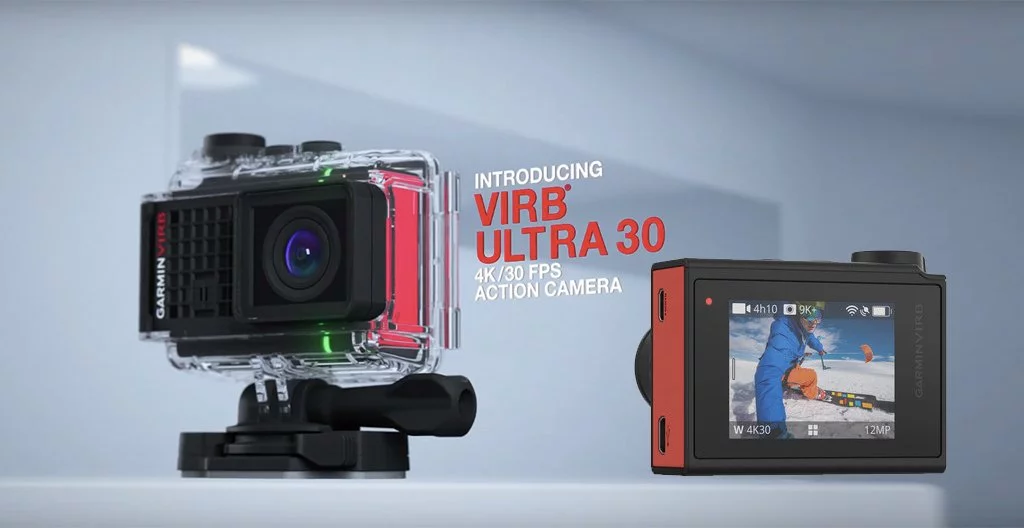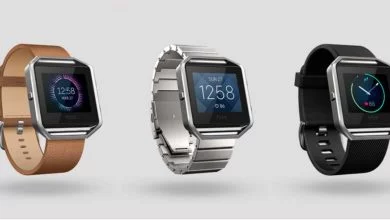Hoy no sólo se ha presentado el Forerunner 35, Garmin también ha anunciado una renovación de su cámara de acción. La nueva Garmin VIRB Ultra 30 llega para sustituir a los modelos que se presentaron el pasado año, las VIRB X y VIRB XE.
Parece que esta vez Garmin sí ha acertado. Tras dos primeras versiones que no destacaron en el mercado, han echado el resto en el nuevo modelo con unas prestaciones que sitúan a la nueva VIRB Ultra 30 claramente en la parte superior del mercado, junto a la GoPro Hero 4 Black (a expensas de la presentación de la Hero 5) pero ofreciendo lo que siempre ha caracterizado a las cámaras de acción de Garmin: datos incrustados en el vídeo.
Navegar a secciones específicas
Especificaciones Garmin VIRB Ultra 30
Vamos con el listado de especificaciones de la Garmin VIRB Ultra 30, que estoy seguro que es lo que más te interesa consultar.
- Grabación de video Ultra HD 4K a 30fps (y 2.7K a 60fps).
- Cámara lenta de 240fps con una resolución de 720p y 120fps a resolución 1080p. Y si lo quieres aún más lento, 300fps a 480p.
- Micrófono de alta sensibilidad, incluso dentro de la carcasa para inmersión en agua.
- Resolución para fotos de 12 megapixels.
- Ráfaga hasta 60fps.
- Pantalla táctil a color en la parte trasera de la cámara.
- La pantalla táctil responde incluso cuando la cámara está dentro de la carcasa sumergible.
- Streaming en vivo a YouTube (sólo para iOS).
- Estabilización de imagen.
- Control por voz (por el momento sólo en inglés).
- Admite audio inalámbrico a través de Bluetooth.
- Conexión a sensores ANT+ para incluir datos en el video.
- Conectividad WiFi, incluyendo estándar Miracast.
- La conexión WiFi no es sólo WiFi-Direct para transmitir archivos a un teléfono móvil, también puede conectarse a una red WiFi.
- Compatible con tarjetas microSD.
Por tanto, estamos frente a una cámara que iguala las prestaciones de la GoPro Hero 4 Black en cuanto a resolución y modos de uso, pero que la supera en muchas otras cosas: pantalla táctil integrada, receptor GPS integrado, conectividad con sensores ANT+, acelerómetros internos, etc.
Como ya sabéis, la principal diferencia de las cámaras Garmin VIRB siempre ha sido la posibilidad de añadir los datos de sensores e incrustarlo en las imágenes de forma automática. Sí, siempre se pueden añadir a posteriori gracias al software VIRB Edit, pero lo cierto es que si tu uso principal será el de compartir videos que incluyan estos datos la opción de Garmin es la más directa, no sólo por no tener que añadir un archivo FIT de la actividad, sino principalmente porque es mucho más rápido que tener que emparejar y recodificar lo que hayas grabado.
Destaca así mismo el micrófono interno que, según anuncia Garmin, será de alta sensibilidad. Esta alta sensibilidad incluye una calidad de audio razonable incluso cuando está dentro de la carcasa resistente al agua.
Esta última versión incorpora también compatibilidad con comandos vocales que, por el momento, sólo están disponibles en inglés. Cosas como «Ok Garmin, take a picture» para hacer una foto sin tener que apretar ni un sólo botón. Una función que dependiendo de cómo y dónde esté colocada la cámara puede ser bastante útil.
Parece ser que, esta vez sí, Garmin ha conseguido una cámara de acción que es capaz de plantarle cara a GoPro. Al menos, hasta saber qué novedades traerá la nueva Hero 5 que no debería tardar en llegar al mercado.
Garmin VIRB Ultra 30, disponibilidad y precio
Garmin VIRB Ultra 30 está disponible prácticamente desde ya. Al menos en EEUU, donde ya es posible adquirirla a través de Amazon. En el resto del mundo estará disponible en los próximos días.
El precio no es barato, pero tampoco lo es la Hero 4 Black con la que podemos comparar esta cámara. Eso sí, en los 529€ que tendremos que pagar por ella se incluirá no sólo la carcasa sumergible, sino también varios soportes de montaje.
¡Gracias por leer!









Hola, una duda:
«Como ya sabéis, la principal diferencia de las cámaras Garmin VIRB siempre ha sido la posibilidad de añadir los datos de sensores e incrustarlo en las imágenes de forma automática. Sí, siempre se pueden añadir a posteriori gracias al software VIRB Edit»
En la Virb Elite, VIrb X y Virb XE los datos de sensores se añaden directamente en la misma grabación del video en la cámara o ¿después hay que añadírselos en el Virb Edit? Si es así, entonces el Virb Edit entiendo que es solo para edición de cortar y pegar partes del video, ¿no?
Bueno, en realidad el vídeo no se graba con los datos incrustados (lo cual sería un error, porque si quieres compartir el vídeo sin datos no tendrías el original).
Lo que hacen las cámaras (la VIRB Ultra 30 también) es grabar junto con el vídeo un archivo FIT. Al extraer el vídeo con el software VIRB Edit lo integra de forma directa. La diferencia es que están totalmente sincronizados y no requiere de ningún tipo de acción por tu parte.
Incluso ese archivo FIT grabado por la cámara podrías subirlo a Garmin Connect, Strava, TrainingPeaks, etc.
Yo solo puedo decir que la garmin para mi es mucho mejor que otras, sobre todo por los añadidos del G-Metrix y su control desde el movil. Tengo 4 camaras garmin y el poder controlar la grabacion de todas desde el movil me parece una gozada.